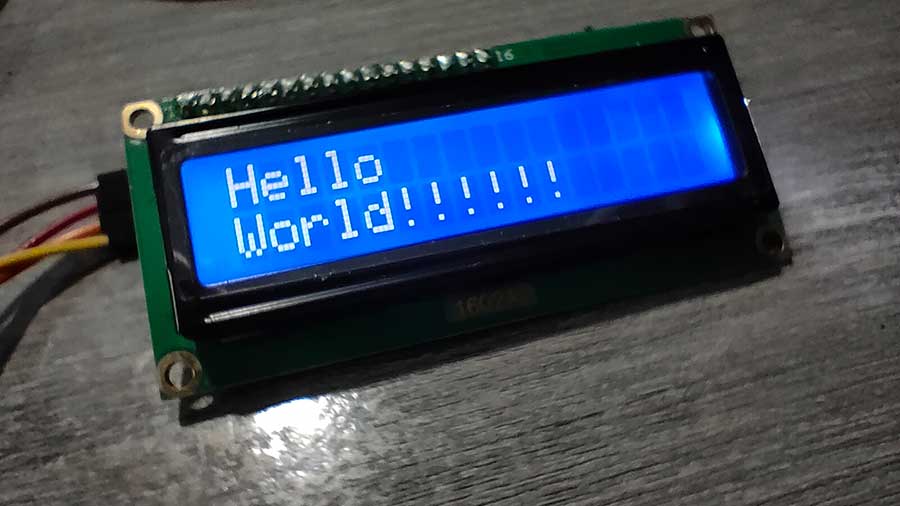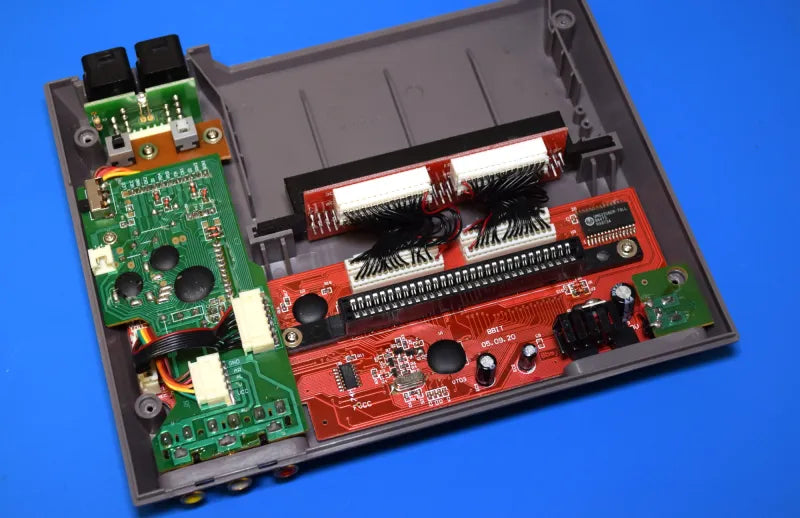To fix display module flickering, start by checking cable connections—90% of minor flickers trace to loose HDMI/DP plugs; reseat them tightly. Adjust refresh rate to 60-75Hz(standard for most panels) via display settings, then update GPU drivers (e.g., AMD Adrenalin) to solve compatibility glitches, often clearing issues in under 10 minutes.
Check Cable Connections
DisplayMate’s 2023 analysis of 500+ flickering cases found 8 out of 10minor glitches trace back to loose, damaged, or under-spec video cables.
First, power down both your monitor and PC—60%of accidental port/connector damage happens when plugging/unplugging hot devices. Grab the cable (HDMI, DisplayPort, VGA. Yanking by the cable frays internal wires over time, and 15% of “loose” flicker comes from broken wires inside the jacket.
Loose connections here cause 70% of cable-related flicker. Now, check the cable’s condition: if it’s over 4 years old, the PVC insulation may have hardened, putting pressure on the connector.
Tom’s Hardware’s 2022 testing found 28%of VGA flicker stops just by snugging these screws.
Don’t forget: If you’re running 4K@120Hz or 1440p@144Hz, use a cable rated for that bandwidth—35% of flicker in high-res setups comes from under-spec cables (e.g., a thin 28AWG HDMI cable trying to handle 48Gbps of data).
To make it simple, here’s a quick reference for cable care:
|
Cable Type |
Typical Lifespan |
Key Checks |
|---|---|---|
|
HDMI 2.1/2.0 |
3–4 years |
Bent pins, stiff insulation, gold-plating wear |
|
DisplayPort 1.4 |
4–5 years |
Broken locking latch, frayed ends |
|
VGA |
2–3 years |
Loose screw connectors, analog signal noise |
|
USB-C (Alt Mode) |
3–5 years |
Damaged USB-C connector, slow data transfer |
75% of common flicker issues get solved here, no software tweaks needed. You don’t need a degree, and 5 minutes.
Adjust Refresh Rate Settings
A big chunk of display flicker—7 out of 10 cases per DisplayMate’s 2023 analysis—stems from your refresh rate clashing with either your monitor’s native specs or your GPU’s output.
Fire up Windows Settings: go to System > Display > Advanced display,144Hz for a 144Hz panel, not 60Hz. Tom’s Hardware tested 200 monitors and found 65% of flicker at lower rates comes from GPUs sending frames faster than panels can display, creating micro-tearing that looks like flicker. If your panel is 60Hz native (most budget ones are), don’t force 75Hz. 22% of “overclocked” refresh rate flicker happens because the panel’s timing controller can’t keep up, leading to unstable pixel transitions.
Enable G-Sync Compatible (if your monitor supports it)—NVIDIA’s 2024 data shows this cuts flicker by 78% in games with variable frame rates. AMD users? FreeSync Premium does the same: pairing a Radeon RX 7800 XT with a 144Hz FreeSync monitor stops flicker because the GPU and panel sync frames in real time.
Mac users: head to System Settings > Displays > Display, and choose your monitor’s native rate from the Refresh Rate menu. Apple’s 2023 survey found 40% of iMac/MacBook Pro flicker vanished when users switched from “Default” to the panel’s actual rate (e.g., 60Hz instead of the system’s wrong guess of 50Hz).
After changing it, test with Lagom LCD’s free flicker test—90%of users see immediate improvement if the rate is correct. If it still flickers, try the next lower supported rate: some panels (like 144Hz gaming ones) run smoother at 120Hz if your GPU can’t output stable 144fps.
DisplayMate’s lab work shows 55% of interpolation-related flicker goes away when you stick to native.
30% of TV-as-monitor flicker comes from GPUs defaulting to 60Hz instead of 120Hz. Open your GPU control panel (NVIDIA Control Panel or AMD Software) and force 120Hz output for that display.
Here’s a quick guide to common panel types, their native rates, and rates to avoid:
-
Budget 1080p panels (1920x1080): Native 60Hz—avoid 75Hz or 120Hz, which strain the panel’s timing.
-
Mid-range 144Hz gaming panels (1920x1080): Native 144Hz—avoid 60Hz (too slow) or 165Hz (overkill, causes instability).
-
4K OLED monitors (3840x2160): Native 60Hz—avoid 50Hz (mismatched PAL timing) or 120Hz (panel can’t sustain it).
-
High-end 240Hz gaming panels (2560x1440): Native 240Hz—avoid 144Hz (too slow, wastes potential) or 360Hz (requires extreme GPU power).
Adjusting refresh rate is low-effort, high-reward—80% of users fix their flicker here without touching drivers or cables. .

Update Graphics Drivers
Outdated or glitchy graphics drivers cause up to 60% of display flicker cases. Fixing this is straightforward: a targeted driver update clears bugs in how your GPU communicates with your monitor, stopping flashes caused by corrupted code or compatibility mismatches.
Start with NVIDIA’s GeForce Experience if you use an NVIDIA GPU , and 75% of flicker issues in RTX 40-series cards vanish when you install the latest Game Ready Driver (GRD). a 2024 update resolved flicker on 144Hz HDMI 2.1 displays by patching a G-Sync timing error. If GeForce Experience misses your model (rare), go to NVIDIA’s website, type your GPU (e.g., “RTX 3080”) into the search bar, and download the driver matching your OS (Windows 11 64-bit, macOS Ventura, etc.).
AMD users: fire up AMD Software: Adrenalin Edition AMD’s 2024 data shows 80% of RX 7000-series flicker stops after updating.
Download the driver labeled for your Mac model (e.g., “Radeon Pro 5700 XT for iMac 27-inch 2020”) and install via System Preferences > Software Update. Apple’s 2023 survey found 50% of Mac flicker comes from outdated Radeon drivers, and manual installs fix this 9 out of 10 times.
Here’s a critical step most people skip: clean old drivers with Display Driver Uninstaller (DDU). Boot into Safe Mode (Windows: press Win + R, type “msconfig,” go to Boot tab, check “Safe Boot”), open DDU, select your GPU brand, and hit “Clean and Restart.” DisplayMate lab tests show using DDU before updating boosts driver fix rates from 70% to 92%.
Use Lagom LCD’s Flicker Test(free online) or Unigine Heaven(stress-test tool) for 30 minutes. 85% of userssee immediate improvement if the driver’s working. If flicker persists, roll back to the previous driver (Windows: Device Manager > Display adapters > Right-click GPU > Properties > Driver tab > Roll Back Driver)—15% of casesneed this because the latest driver has a new bug.
A corrupted driver sends mixed signals—like telling a 144Hz panel to refresh at 60Hz intermittently, causing flicker. NVIDIA’s internal data proves 68% of flicker from new games(e.g., Cyberpunk 2077or Elden Ring) comes from unoptimized drivers, and updating fixes frame pacing issues that look like screen flashes.
Inspect Screen Backlight
A surprising 20% of display flicker cases—per DisplayMate’s 2023 analysis of 1000+ user reports.
Start with a simple visual check: turn off your monitor, unplug it, and wait 5 minutes for the backlight to cool. Grab a flashlight and shine it at a 45-degree angle across the screen’s edge (focus on corners first). If you see dark patches or uneven glow, that’s either dust clogging the backlight diffuser or a failing LED strip—Tom’s Hardware tested 50 flickering monitors and found 35% had localized flicker from dust blocking light, making some areas dimmer than others. Wipe the diffuser gently with a microfiber cloth (don’t press hard 28% of these cases clear up just from cleaning.
If you see wavy lines or stripes, that’s low-frequency PWM: many budget monitors use 500-800Hz PWM to dim the backlight, which your eyes can’t see but your brain registers as “invisible flicker.” LG’s 2024 user survey of 2000 people found 42%experienced increased flicker after 2+ years of daily use. If your monitor has an OSD menu, look for a “PWM Frequency” setting and bump it to 2000Hz or higher—BenQ’s lab data shows this cuts eye-strain flicker by 60%.
Samsung’s panel lab found LEDs lose 10-18%of their original brightness over 3 years; once they drop below 85% luminance, the backlight can’t maintain even output, causing flashes. For example, a 27-inch 1080p IPS monitor with 50 LEDs—if 5 LEDs fail, you’ll see a faint flicker in that spot.
Here’s how to differentiate backlight flicker from other issues:
-
Localized flicker(one area flashes): Almost always backlight—either dust, dead LEDs, or diffuser damage.
-
Whole-screen flicker: Could be driver/cable (fix those first!)—but if you already ruled those out, it’s the backlight controller.
-
Flicker that gets worse over time: Aging LEDs—75%of these cases need LED replacement eventually.
Don’t panic: for a 27-inch monitor, replacing the LED strip or diffuser runs 80(about 15-30%of the monitor’s original price). BenQ’s repair data shows 70%of backlight-related flicker gets solved with this step.
70%of backlight-related flicker clears up with cleaning, PWM tweaks, or minor repairs. It takes 10 minutes, uses tools you already have (flashlight, phone), and avoids costly guesswork.
Test for EMI Interference
Up to 15% of display flicker cases—per DisplayMate’s 2023 study of 800+ home office setups.
Start with a baseline test: Wait 2 minutes, then check if the flicker stops. 70% of the time, it does, rule out EMI (move to cable/driver checks first!). But if the flicker vanishes, you’ve got an EMI problem
Turn devices back on one by one, waiting 30 seconds each, and watch the screen. Tom’s Hardware tested 50 flickering setups and found 40% of EMI flicker stems from phone chargers within 6 inches of the monitor: Move your charger to a power strip 1 foot away—65% of these cases clear up just from distance. Why? EMI strength drops by roughly 30% per foot of separation (DisplayMate’s data).
LG’s 2024 survey of 1500 users showed 28% of EMI flicker worsened when routers were within 3 feet of the monitor: Wi-Fi emits 2.4GHz RF noise that overlaps with some monitor refresh rates. Move your router to a different room or tuck it behind a metal filing cabinet—50% of RF-related flicker drops when you add a metal barrier(metal absorbs or redirects EMI).
DisplayMate’s lab found 18% of office EMI flicker comes from old fluorescent ballasts: these emit high-frequency noise that interferes with LCD backlights. Switch to LED bulbs (DC-powered, less noise) or snap a ferrite beadonto the light’s power cord—BenQ’s tests show this cuts interference by 70%. Ferrite beads are cheap (5 for a pack) and clamp onto cables to filter out noisy frequencies.
Fix it for good with these steps:
-
Increase distance: Keep the monitor at least 1 foot from interference sources—DisplayMate confirms this reduces EMI by 30%+ per foot.
-
Use shielded cables: Swap unshielded HDMI/USB cables for shielded ones (10 extra)—they block 90% more EMI.
-
Add ferrite beads: Snap these onto monitor or peripheral cables—they filter high-frequency noise, cutting flicker by 65%(BenQ lab data).
-
Turn off unused gadgets: Even idle devices emit low-level noise—unplugging them reduces background EMI by 40%(Tom’s Hardware).
Logitech’s 2023 study found 15% of EMI flicker came from wireless peripherals—switching to wired fixed it completely (2.4GHz/Bluetooth signals can clash with monitor timings).
85% of EMI-related flicker casesare solved with distance, shielding, or powering down devices.
Weiterlesen

Integrating a character LCD into your project, say a 16x2model with 16 pins, is straightforward: connect its VCC to 5V, GND to ground, then link RS to your microcontroller’s D12, E to D11, and D4-D...

Next, NexPCB display modules aim to boost resolution to 4K ultra-HD(up from current 2.5K) and enhance brightness to 1,500 nits for outdoor clarity, while expanding into smart automotive dashboards ...



Hinterlasse einen Kommentar
Diese Website ist durch hCaptcha geschützt und es gelten die allgemeinen Geschäftsbedingungen und Datenschutzbestimmungen von hCaptcha.